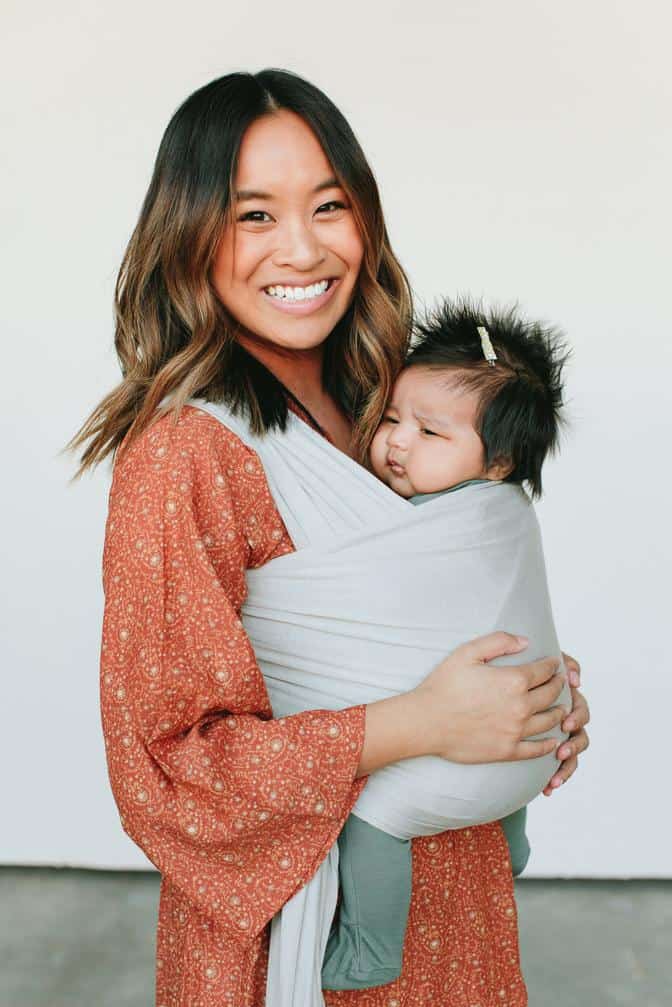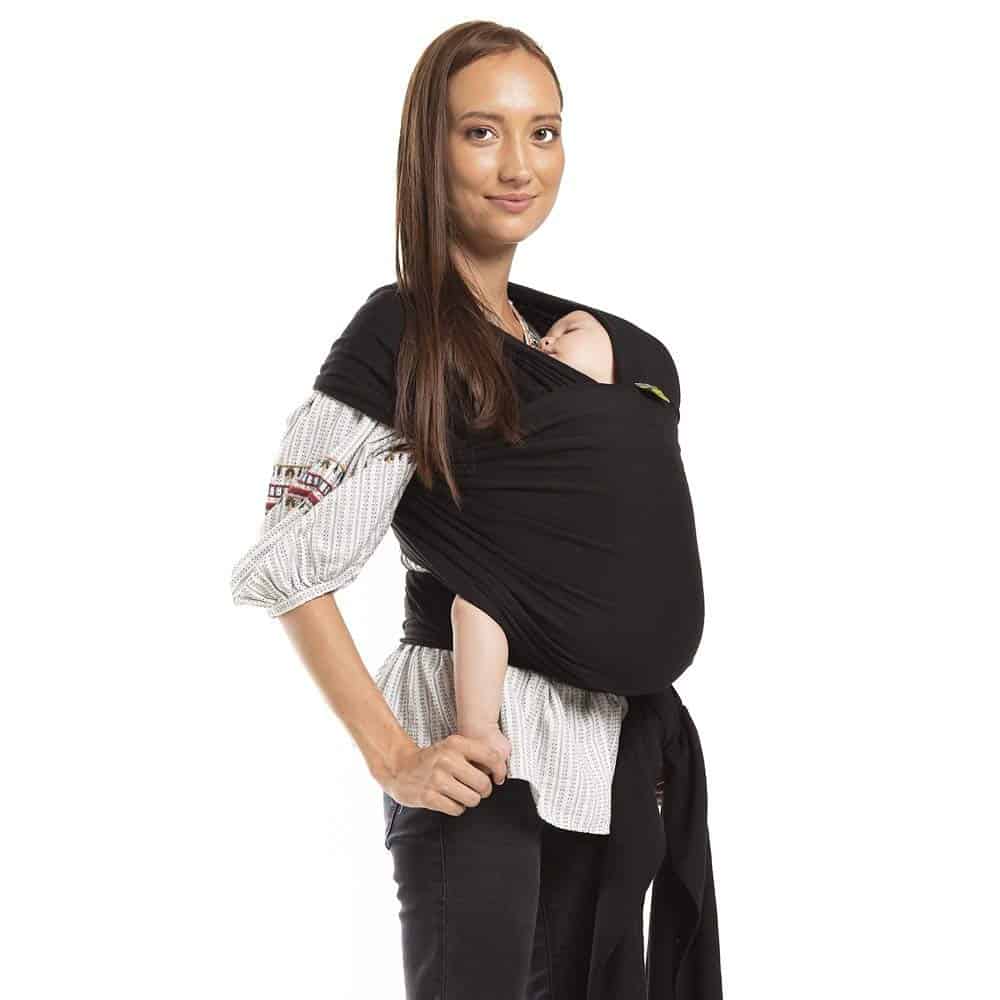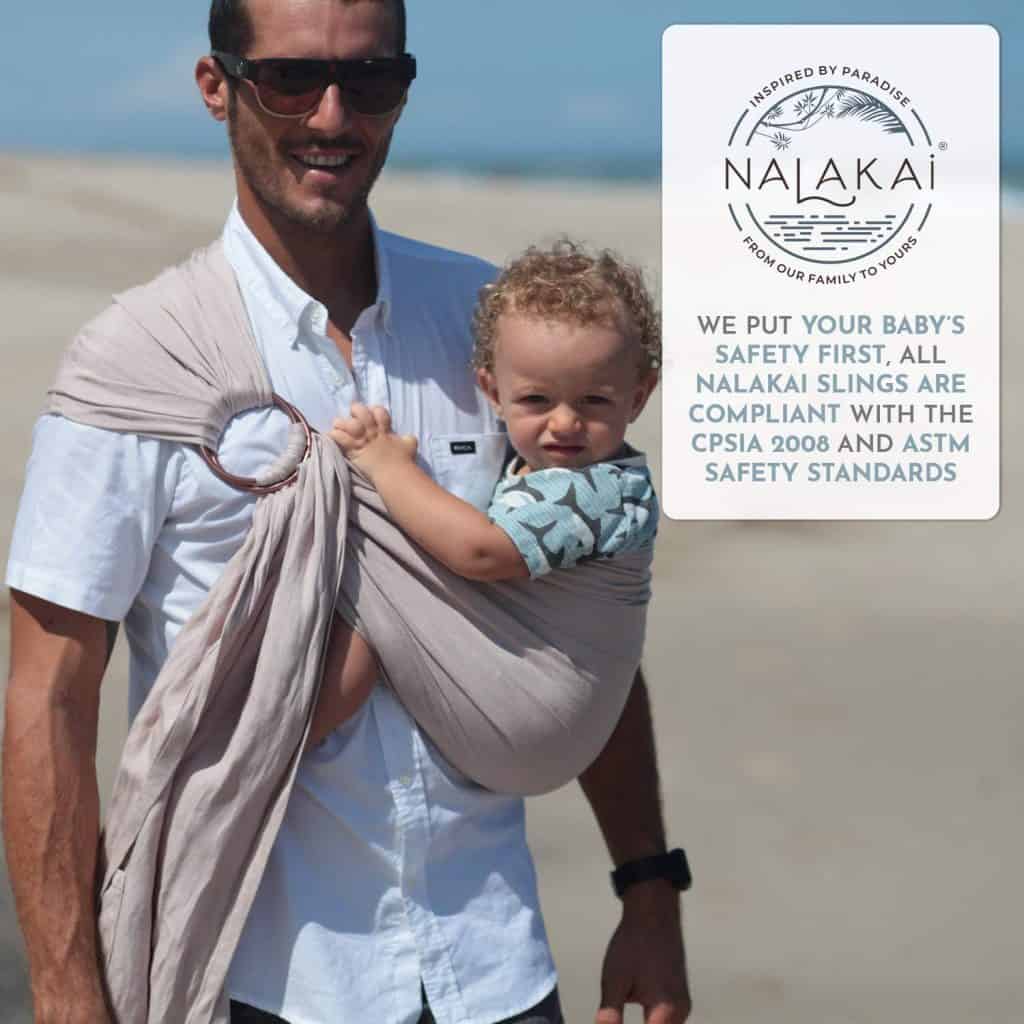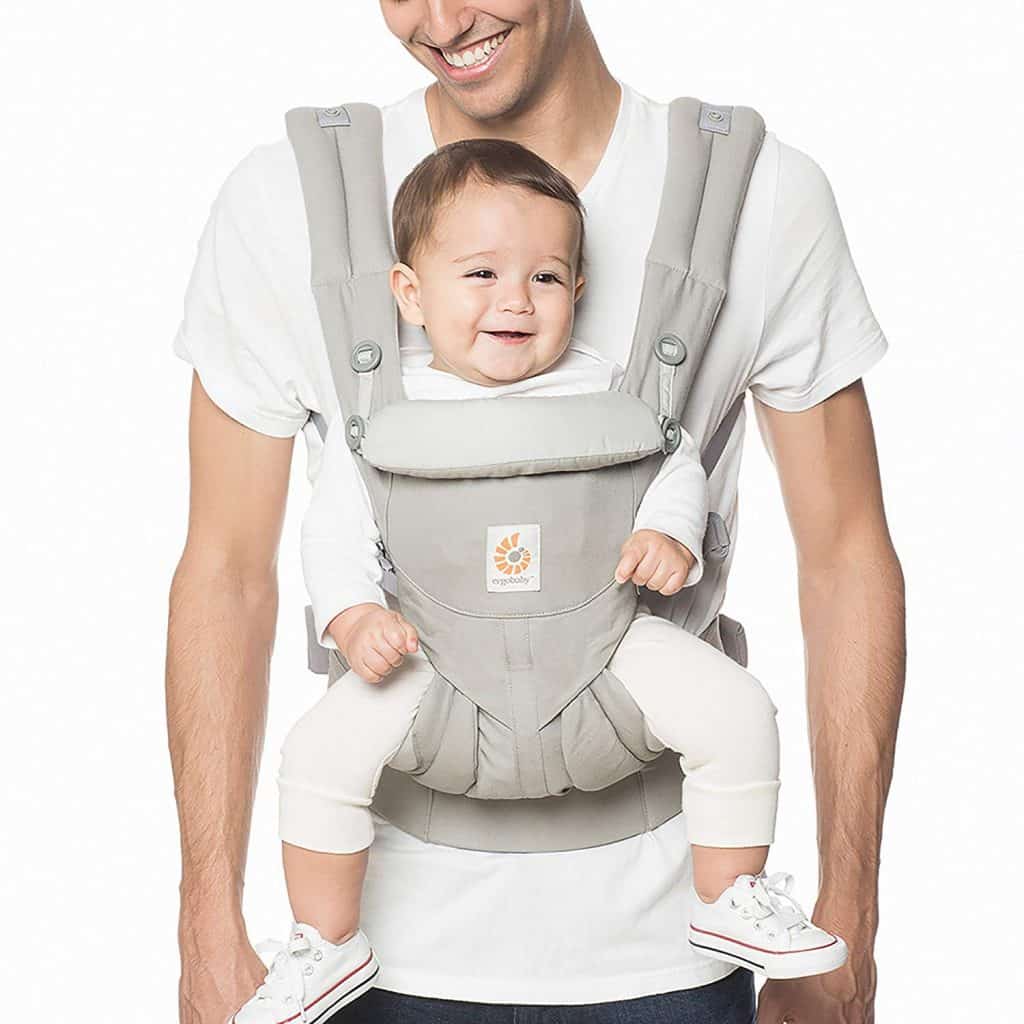Babywearing is awesome for parents and their little ones. It has been the custom in many traditional cultures for centuries and modern society is now catching up. There are just too many obvious benefits not to follow this trend. But how long is too long for a baby in a carrier?
There is no exact maximum time for a baby in a carrier, and in fact it will likely change as your baby grows and develops. As a general rule a baby should not spend more than 2 hours in a carrier but in reality it will depend on the situation, the carrier used, your baby’s age, strength, etc.

Having your baby on your body in a baby carrier fosters a close bond between you and your baby. It soothes a fussy baby and can stop constant crying. And while you have your child safely with you, your hands are free to do whatever you need to do.
Let’s take look at the different types of baby carriers available and how each type of baby carrier affects the length of time your baby should be in it for.
Check out this video that highlights some great tips regarding baby carrier tips:
When can you carry baby in a carrier
In theory, babies can be carried is a carrier as soon as they are born. Baby carrier like wraps and slings can be used from any age. In many cultures it is common to use a wrap or sling as soon as baby is born.
It’s important to keep in mind that your baby is still very fragile in the early weeks and months and special care should be taken to ensure proper fit and safety.

When carrying a newborn baby, it’s important to ensure the head and neck are well supported as is the carrier is age appropriate. Many soft structured carriers require a newborn or infant insert in order to be compliant with newborn babywearing.
How long can you carry a baby in a Baby Wrap
Wraps are the most basic type of baby carrier but don’t be fooled, they offer great support and comfort for both wearer and baby.
A wrap is basically a long piece of fabric made from cotton, linen or a knit, that you wrap around you and your baby. Most commercial wraps come with instructions on how to do the wrap. You can also make your own wrap and simply find out from YouTube videos how to master wrapping.
Wraps are great for young infants and can be wrapped in a way that is hip friendly and provides head support.
My favorite baby wrap carrier is the Solly Baby. The material is just amazing and has the perfect amount of stretch to keep baby close and comfy. Check out my full review of the Solly baby here.
Newborns to 5 months
Small babies will stay happy in a wrap for hours on end. A wrap creates a little cradle for them that they seem to find comforting.
Newborns wake up to feed every two hours, so they will be taken out of the wrap regularly as a matter of course. As they start to sleep longer, they can stay in the wrap until they get restless.
At any rate, as soon as baby feels uncomfortable, he will let you know.
5 Months to 18 months
These babies can hold their heads steady and they are now interested in their environment. You would think that they won’t stay in a wrap for too long, but babies who are used to a wrap usually spend many happy hours in it.
Mothers report that their 18-month-old children habitually fall asleep in their wraps.
The rule of thumb is the child can stay in the wrap for as long as he and the wearer are happy and comfortable. Some mothers wear their babies for many hours in the day as it’s a practical, simple way to look after a baby.
18 Months to 36 Months
As all parents know, these toddlers have endless energy; they are on the go all the time. Chances are that they won’t want to be in a wrap for hours on end.
Besides, a 3-year-old weighs between 26 and 40 pounds – not a weight you want to carry around for hours while you’re doing chores. Although you can definitely carry a 3-year-old in a wrap, it is not the most comfortable choice for that age. Also, children of that age should be active; they should not be held immobile in a baby carrier for hours.
You can wear your toddler in a wrap for as long as they are happy in it, but do remember that a child of that age should be running around (although it’s tiring for you).
Wraps are also perfect for doing activities around the home like finishing your chores while your baby naps on you. Check out our detailed post on the best baby carriers for doing chores around the house.

How long can you carry a baby in a Baby Sling
A baby ring sling is made of a long piece of fabric that has two rings at one end. To secure your baby in it you thread one end through one of the rings and then thread it back through the other ring.
The sling is worn over one shoulder and you carry your baby in the pouch that’s formed on the opposite hip. Slings are very popular for use during summer as they only hang over one side of the wearer’s body and leave one shoulder complete uncovered Slings can be used from day one until your child is around 3 years old.
Ring slings are great for your babies and are easily adjustable but they may not be ideal for extended periods since they go over one shoulder and the baby is often in an angled position that is not upright.
One of the best features of the ring sling is that it’s so easy to put on by yourself. Check out our detailed post on the best baby carriers to put on by yourself.
My favorite ring sling is the Nalakai. It’s very easy to use and super versatile. Check it out on Amazon here!
Newborns to 5 months
A sling holds your baby in an ergonomically good position which is snug and comfy. A small baby will sleep happily in a sling for hours. Mothers find that they only take their newborn out for a feed every couple of hours, the rest of the time the little one usually sleeps.
As for how long you can carry your baby in a sling, the answer is for as long as he is happy in it. You don’t need to worry that you are spoiling your child if he spends hours in his baby carrier. According to the American Academy of Pediatrics, holding a baby in the early months helps them to feel safe.
5 Months to 18 Months
The same guidelines apply for slings as for wraps. A toddler who is accustomed to a sling will willingly sit in it for hours provided they can look out and see what’s going on around them.
You can be sure that if your child becomes too hot or uncomfortable for whatever reason, he will let you know.
18 Months to 36 Months
Toddlers of 18 months usually love their slings and will spend hours in it, but by the time a child reaches 36 months, they weigh quite a bit. A sling can still be used for carrying older toddlers, but you’ll probably find that the time spent in the sling becomes shorter. Partly because nap times are less frequent and partly because your back is complaining about the weight.
How long you can carry an older toddler in a sling will depend on you and your child. Use your discretion, but again, keep in mind that toddlers should have ample opportunity to run around and explore.

How long can you carry a baby in a Soft-structured Carrier
Soft-structured carriers look like mini backpacks. They have a padded rectangle that forms a pouch for the baby to sit in. They come with straps that fit over the parent’s shoulders and around the parent’s waist. The straps are fastened with buckles.
These carriers are comfortable and secure for you and your baby and there is a large variety to choose from on the market.
My favorite soft structured carrier is the Ergobaby Omni 360. The Ergobaby is so functional it can be used in almost any situation. Check it out on the Ergobaby website or Amazon!
Newborns to 5 months
Most soft-structured carriers are not suitable for newborns. They are designed for babies from 4-5 months old who have developed their neck muscles well enough to be able to hold their heads properly. Some models can be used from birth, usually with the addition of an infant insert.
Depending on the make, these carriers can be quite snug and a little one will be content in it for extended periods. As long as your baby is well-supported and happy, he can stay in the carrier. These little ones should be carried in the front, facing you so you will know immediately when they are unhappy and need a change.
It’s important to carry young infants in the correct “M” position which is the safest in regards to hip dysplasia. Most good quality carries will support this position but it’s important for parents to check that the baby’s knees are placed higher than the hips.
18 Months to 36 Months
If you plan to have your baby in a soft-structured baby carrier for a few hours, make sure that it is a brand that supports the child in a healthy way. That is the seat should be wide to allow for the child to sit with their legs in the so-called frog position with knees bent, legs apart and knees higher than the hips.
Once your baby is older you will find yourself doing everything with him in the carrier. Even daily chores are possible with the right carrier.
Conclusion
It is okay to wear your child for some hours. It’s unlikely that you will wear your baby too long because he will let you know in no uncertain terms when he’s had enough. There is no official recommendation for a set number of hours that you can carry your child.
You and your baby will be fine if you stay alert to your baby’s signals.
You can also check our detailed comparisons of baby carrier vs slings and baby carriers vs wraps for a more detailed side-by-side.
Paul is a passionate dad who founded Upside Dad to share his parenting journey with other new parents. He graduated from Concordia University and worked as a test engineer for over a decade. Paul loves dad jokes and craft beer.
Learn more about Paul and Upside Dad here.
